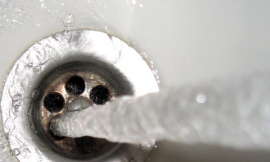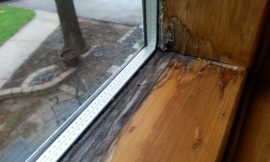
Did you know that up to 50% of homes have some type of mold? It can grow in the most unexpected places, and your attic is no exception! Mold not only poses serious health risks but also threatens the structural integrity of your home. If you've noticed a musty smell or dark spots up there, it's time to take action. In this article, we'll explore the causes of mold in the attic and provide step-by-step guidance on how to eliminate it safely. Get ready to breathe easier and reclaim your space!
Understanding Mold: What It Is and Why It Grows
Mold is a type of fungus that can appear in various colors and forms, with some common types being black mold and toxic mold. It's important to recognize that not all mold is harmful, but certain types can pose health risks, particularly to those with respiratory issues or weakened immune systems.
For mold to thrive, there are a few necessary conditions: it needs moisture, darkness, and an organic food source. You might find mold growing in damp, dark corners of your home, such as attics, basements, or behind walls where there’s been water damage.
There are many misconceptions swirling around about mold and its health impacts. While some molds are benign, others can release spores that trigger allergies and respiratory problems. Knowing the facts can help you take better care of your home and health.
Common Causes of Mold in Attics
One of the most significant contributors to mold growth in attics is poor ventilation. When air circulation is limited, moisture accumulates, creating a perfect environment for mold. Proper airflow is essential in maintaining low humidity levels.
Another common cause is roof leaks and water damage. It's crucial to be vigilant and identify signs of trouble, such as water stains or damp spots on ceilings and walls. Early intervention can save you from extensive mold problems later on.
Insulation issues also contribute to mold growth. If your insulation isn’t doing its job effectively, it can trap moisture, creating a conducive environment for mold.
Seasonal changes affect indoor humidity levels, too. High humidity during certain seasons can lead to increased moisture in the attic, which fosters mold growth. Keeping an eye on humidity levels year-round can help mitigate this risk.
Identifying Mold in Your Attic
So how can you tell if mold is making a home in your attic? Watch for visual indicators, such as discoloration or spots on walls and ceilings. Mold can appear in various colors, including green, black, or even white.
Another telltale sign is the presence of a musty odor. If you notice this unpleasant smell in your attic, it's a strong indicator that mold could be lurking nearby.
For a more precise assessment, using moisture meters can be incredibly helpful. These tools allow you to detect hidden mold and dampness that might not be visible to the naked eye.
Safety First: Precautions Before Mold Removal
Before diving into mold removal, it’s essential to prioritize safety. Personal protective equipment (PPE) is a must; this includes wearing masks, gloves, and eye protection to prevent skin and respiratory exposure.
Proper ventilation of the area is crucial as well. Opening windows and using fans can help reduce your exposure to mold spores during the removal process.
Recognizing your limits is important. If the mold covers a large area or if you experience severe allergic reactions, it’s wise to call in professionals who specialize in mold remediation.
Step-by-Step Guide to Safely Remove Mold
If you decide to tackle mold removal yourself, start by gathering the necessary tools and products. This may include cleaning solutions specifically designed for mold, brushes, and spray bottles.
When it comes to cleaning techniques, focus on scrubbing surfaces thoroughly. Use a mixture of water and cleaning solution to eliminate visible mold spots. Be sure to clean surrounding areas as well to prevent spores from resettling.
Disposing of contaminated materials is crucial. Always follow safe practices when disposing of moldy items to prevent spreading spores throughout your home.
Preventing Future Mold Growth in the Attic
To keep mold at bay, ensuring proper ventilation is key. Effective strategies such as installing vents or using fans can promote better airflow and reduce moisture levels in the attic.
Consider upgrading your insulation, too. Choosing the right materials designed to minimize moisture buildup can go a long way in preventing mold growth.
Finally, create a maintenance schedule to conduct regular inspections. This will help you check for any signs of mold risks before they escalate into larger issues. Regular attention to these areas ensures a mold-free attic for years to come.
Conclusion
Mold in the attic is more than just a nuisance—it's a health hazard! By understanding the causes and taking preventive steps, you can ensure your attic remains a safe space. Don't wait until it’s too late; act now and protect your home! If you're facing serious mold issues or feel overwhelmed, don’t hesitate to consult with mold remediation professionals. They can provide the expertise necessary to ensure your home is mold-free and safe.






